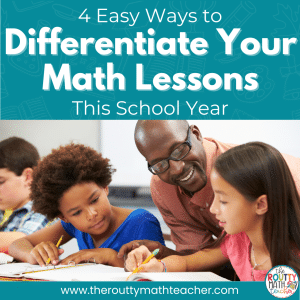Planning for the various needs of a full classroom of students can be a time-consuming and overwhelming process. If you’re looking for a fun and creative way to reduce your workload, create more engagement for your students, and for differentiation in math class at the same time, math menus may be the right choice for you. In this post, I share four of my favorite math menus and show how they can create instant opportunities to meet students’ needs.
They had me at “Taco.”
Taco Bell that is.
That was all I needed to see. I could picture the possibilities.
I could have Taco Bell for lunch every day.
Every. Single. Day.
I smiled as I imagined myself savoring the crunchy tacos and creamy cheese sauce.
I knew 9th grade would be the best year of my life. 😁
—
The Best Thing About High School
The most exciting part about going to high school was the lunch choices.
From feel-good comfort food to Tex-Mex (my fav) to pizza and deli sandwiches, there was something for everyone.
Knowing I had an array of choices to choose from at lunch made the idea of leaving the middle school I had come to know and love and heading to a high school with over 2,000 students much more enticing.
Choice matters. ❤️
How Can We Promote Student Choice in the Classroom?
Math menus are a great way to add some challenge and pizzazz to your everyday mathematics curriculum and differentiate learning for a variety of student needs at the same time.
A math menu is a content-focused set of options from which students choose activities and tasks on which to work. Students can receive a menu for a specific time period, such as a week, for a particular unit of study, or for a grading cycle.
Menus provide instant opportunities for differentiation in math class because students choose which activities they would like to complete based on their own interests and ability levels.
Here are four of my favorite ways to differentiate in math class!
How to Use Math Menus for Differentiation in Math Class
Menu 1: Choice Boards
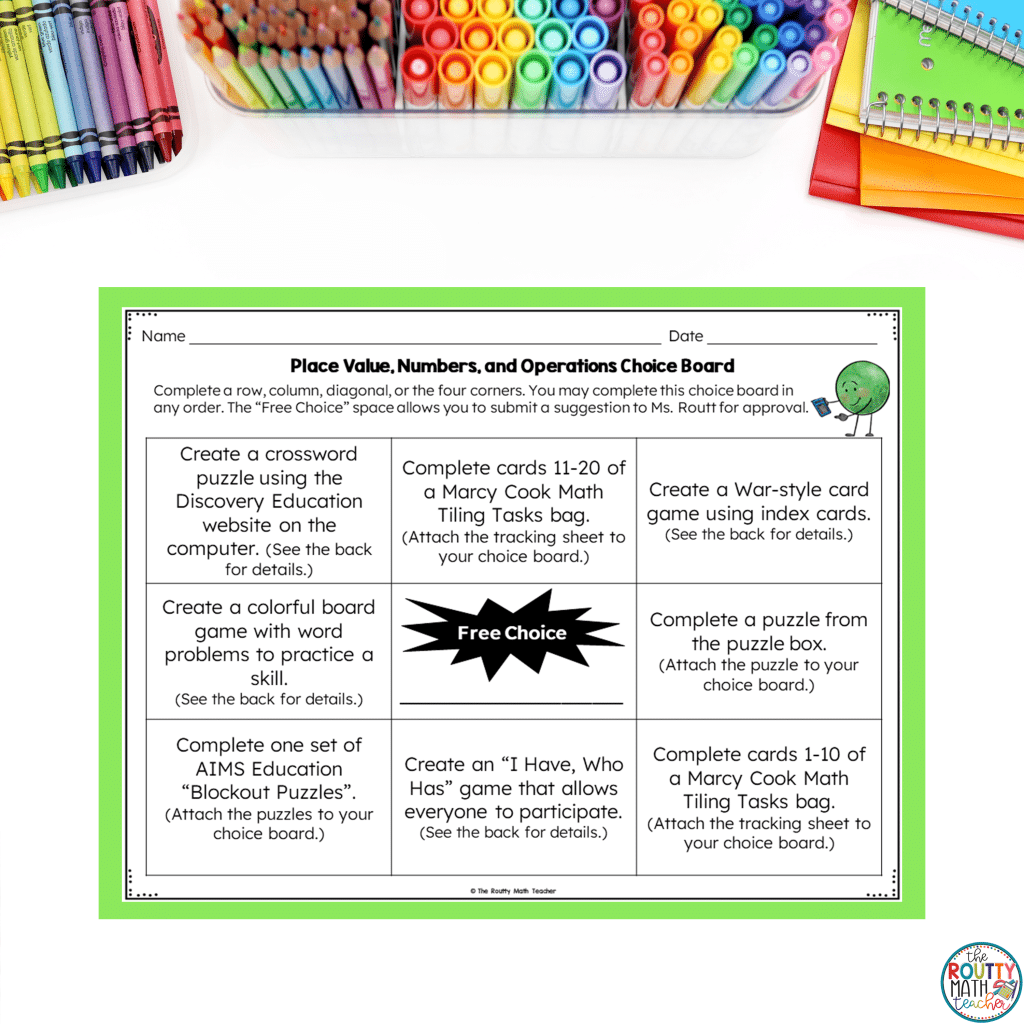
How to Use It
To complete this board, students complete all of the activities in a column, row, diagonal, or four corners.
For the “Free Choice” space, students submit an idea for approval. The idea can be something the student creates or a task from one of the other spaces as long as it meets the desired level of challenge as determined by the teacher.
Differentiation
Differentiation with this menu occurs with the placement of the tasks. Placing similar level tasks along the same completion path, i.e. rows, columns, diagonals, or the four corners, will create opportunities for students to complete tasks based on their learning needs.
In addition, because this menu is simpler than some of the others, multiple menus can be created for different groups of students to allow for choice with tasks that meet a variety of achievement levels.
Menu 2: Game Show Menu
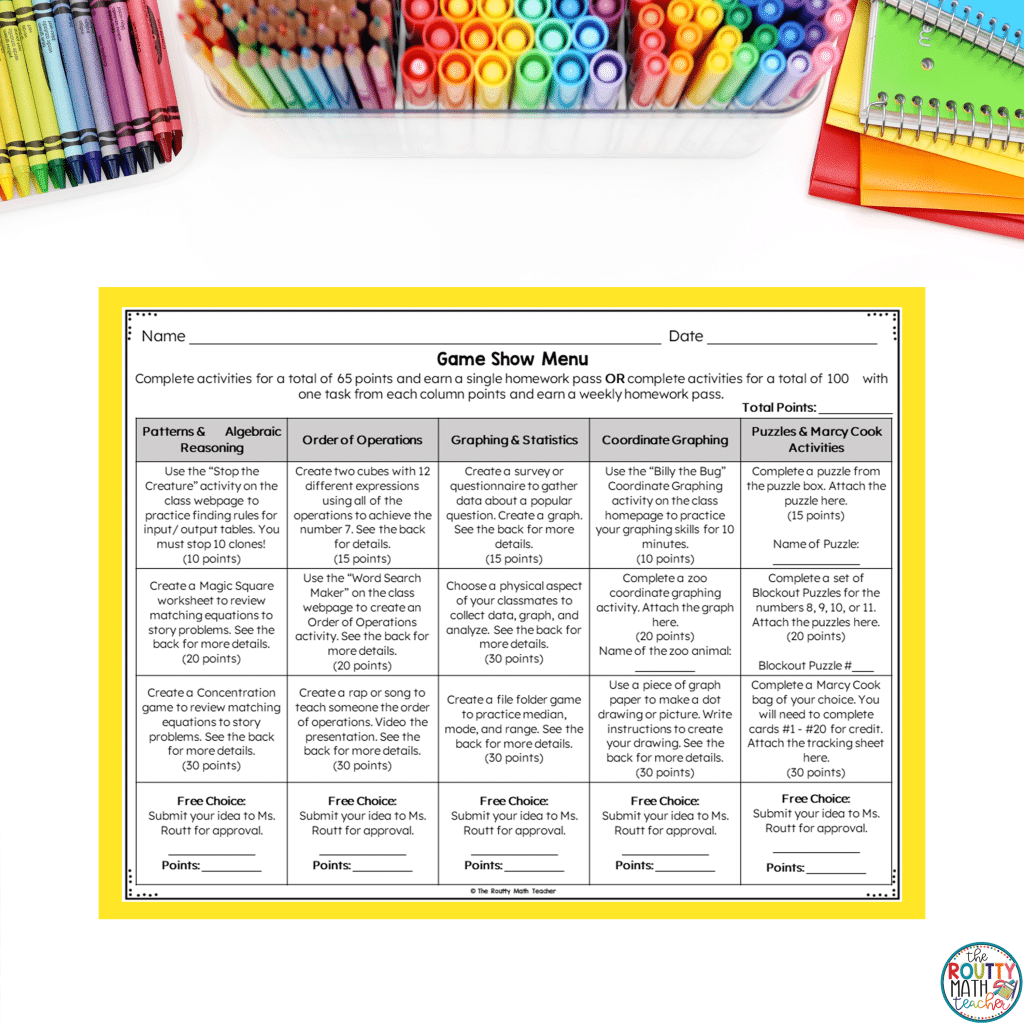
How to Use It
The game show menu allows students to choose tasks based on a specific “category,” the columns, and earn points based on the difficulty or challenge level of the task.
For this menu, students complete one activity from each “category,” or column, and accumulate a target number of points. Like the choice board, this menu includes opportunities for students to get creative and submit their own product ideas.
Differentiation
To differentiate with this menu, lower the target number of points for some students so they can successfully complete the menu by completing the lowest-point value task in each category.
Menu 3: List Menu
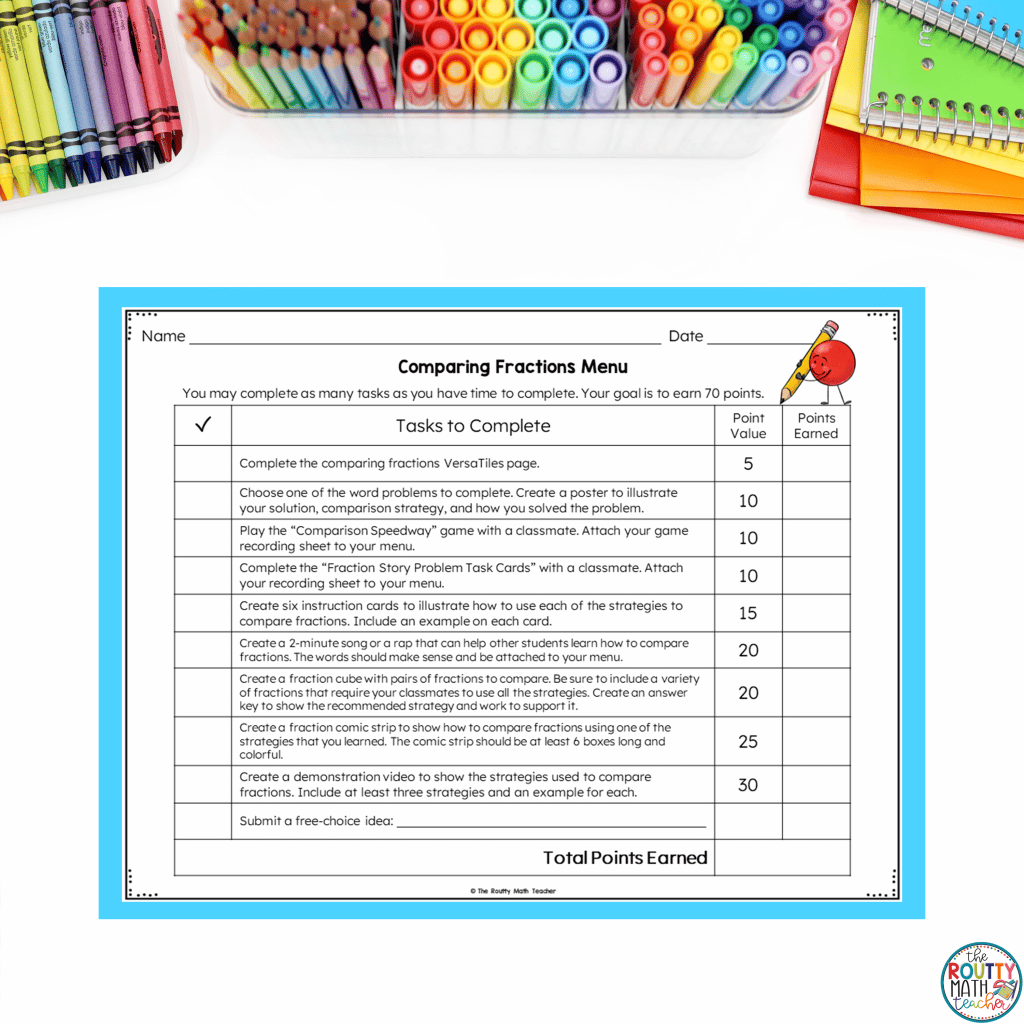
How to Use It
A list menu presents tasks as a list. Students choose which activities to complete from the list of eligible tasks with the expectation that they will obtain a pre-determined number of points to complete the menu.
Like the menus shared previously, the list menu has a free choice option where students present an idea and agree on a point value upon approval.
Differentiation
Like the choice board, this menu is simple enough to create multiple versions to meet the various learning needs of the students in your classroom. The point-goal can also be adjusted to reflect the needs of different students.
A lower point-goal would be most appropriate for students who will be completing the tasks that require a lower level of cognitive demand (and earn fewer points).
Menu 4: 20-50-80 Menu
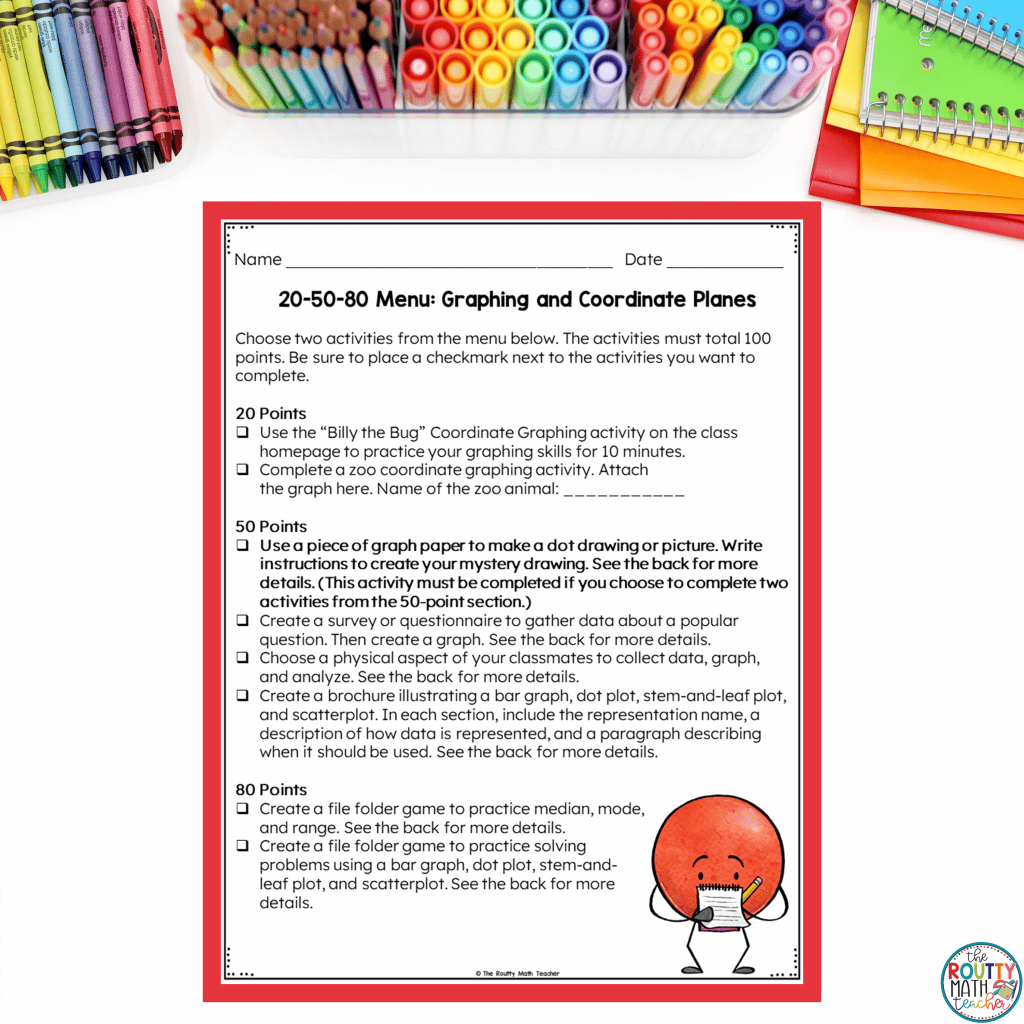
How to Use It
A 20-50-80 menu includes tasks assigned a 20-point, 50-point, or 80-point value. For this menu, students choose two activities to complete from the list totaling 100 points.
The menu includes two 20-point tasks, four 50-point tasks, and two 80-point tasks. Because of this structure, students must choose one 20-point task and one 80-point task or two 50-point tasks to complete.
Differentiation
Due to the limited number of choices on this menu, the best way to differentiate with it would be to create two or three different menus and assign them to students based on their academic level.
Other Strategies for Differentiation in Math Class
Each of the menus can be tailored to meet the needs of your students. It may feel like you need a lot of activities to assign each menu, but I encourage you to reuse product ideas.
For example, a task that may be worth little on a menu designed for your high achievers may appear as a product with a high point value on a menu for your lower achievers.
Don’t be afraid to use the resources you’ve got on hand.
You can include textbook assignments and workbook pages on your menus. Some students will prefer to do these tasks instead of some of the more involved ones anyway.
Differentiation in math class does not have to be time-consuming. The key to success– vary the tasks and products you chose so all students can feel successful.
How to Learn More About Math Menus
Want to check out some fun and creative math menu products?
Click here to check out 10 of my favorite products.
Want to know how to grade math menus?
Click here to learn how to use a rubric to grade your math menus.
Want to snag a free math menu?
Click here to download a free choice board for whole number operations.
Note: These menu ideas originated from Differentiating with Menus by Laurie Westphal.
Sound Off!
How do you differentiate for the students in your classroom? Respond in the comments below.





